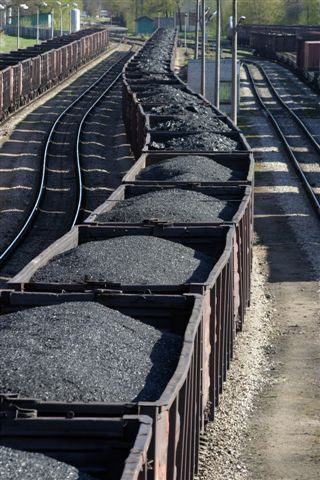International coal exporters “betting on China’s insatiable demand” have been issued a fresh warning, with a new report predicting more than half of the huge annual thermal coal supply destined for China may not have an end market by the end of this decade.
Released on Thursday, the report from the Carbon Tracker Initiative and ASrIA (the Association for Sustainable and Responsible Investment in Asia), warns that lower-than-expected Chinese thermal coal demand is threatening to leave investors with stranded assets and wasted capital.
 And it predicts a potential shortfall between business-as-usual in China and early peaking demand of 1030 million tons of annual thermal coal supply, or 56 per cent of China’s demand in 2012, that may not have an end-market in 2020 – a risk, says the report,that is “of notable interest” to countries like Australia.
And it predicts a potential shortfall between business-as-usual in China and early peaking demand of 1030 million tons of annual thermal coal supply, or 56 per cent of China’s demand in 2012, that may not have an end-market in 2020 – a risk, says the report,that is “of notable interest” to countries like Australia.
The report, The great coal cap: China’s energy policies and the financial implications for thermal coal, explains that China’s policy response to a combination of economic, environmental and energy market factors mean the nation’s peak coal demand could be realised at the earlier end of the forecast range of 2015-2030.
These, combined with slowing growth of China’s thermal coal sector – and their own efforts to increase supply – “suggest China’s import demand could decrease rapidly leaving exporters needing to find another end-market for excess supply or be left with stranded assets,” says the report.
By 2020, says the report, the difference between a business as usual path and an ‘early-peaking’ trajectory from a combination of these factors indicates “significant potential asset stranding as a result of lower-than-expected demand within China’s thermal coal sector.”
The timing of the report is interesting, following so closely after Prime Minister Tony Abbott’s Minerals Council dinner declaration that he “could think of nothing more damaging” to Australia’s future than leaving its coal in ground and unsold.
But while the unflinching resolve of Abbott and his ministers to dig up all of Australia’s coal should not be doubted, whether or not it can then be sold will ultimately have little to do with political will.
As the Carbon Tracker report’s lead author, Luke Sussams, notes, “if China becomes a zero imports market, which is possible, there is a noticeable lack of any viable alternative growth market for seaborne traded coal. Where will Australia’s $US50 billion of thermal coal go instead?”
And he’s not the only one wondering. In the Australian Financial Review today, leading Australian economist Ross Garnaut issued his own warning on China’s coal appetite, suggesting it may already be in decline, and predicting a “historic” turnaround in demand that would lead to a 10 per cent decline by 2020.
“Australian-based coal producers have made large investments in expanding capacity at home and abroad since the outlook changed in 2011,” Garnaut told the AFR.
“Little of the incremental investment since 2011 will return the cost of capital to shareholders and all of it lowers returns to past investments by lowering price. Catching up with reality sooner rather than later will limit the amount of good money that is thrown after bad.”
To do as Garnaut recommends, and catch up with reality, the Carbon Tracker report recommends investors assess their exposure to changes in China’s coal demand and adjust them accordingly, and calls on policy-makers to stress-test banks and other financial institutions on balance sheet exposure to stranded asset risk and subsequent risks to market stability; enhance and extend green finance requirements; and keep stranded asset risk issues on the agenda.
“There is an opportunity for both China and other countries to ease the potential disruption and risks associated with stranding assets,” says the report. Investors and financial institutions with significant assets at risk should be supported in developing a plan of action for managing the stranding process.”










